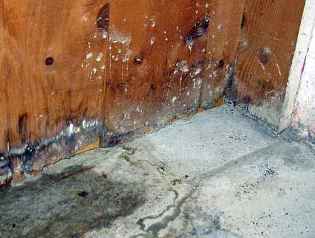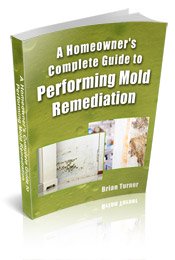Find a Mold Specialist Now
Click or Call, Toll-Free 24/7
Water Damage Mold
You may notice some water damage mold growing in a damp area where you had a leaky pipe under the kitchen sink or a leaky roof. The mold from water leak is unsightly, but did you realize it can also be hazardous to your health? It can. Mold has been associated with a wide range of symptoms, some severe.
Symptoms
Symptoms associated with mold from water leak include upper respiratory tract infections, chronic sinus infections, increased susceptibility to colds, coughing, sneezing, runny nose, itchy eyes, watery eyes, sore throat, headache, fatigue, trouble sleeping, dizziness, depression and difficulty concentrating. People that have asthma often experience an increase in symptoms and occasionally someone not previously diagnosed with the condition develops asthma after exposure to mold from a water leak. Small children, the elderly, those with respiratory problems like emphysema or chronic obstructive pulmonary disease and those with compromised immune systems (conditions like HIV and AIDS) are at greater risk for symptoms but anyone living in home with water damage mold can be affected.
Signs of Mold from Water Leak
Signs of mold from water leak include visible mold, usually black or gray in color, either patchy or streaky, and the mold from water leak usually looks slimy. You may also notice peeling paint, water stains on walls or ceilings, buckled drywall or buckled shelves under your kitchen or bathroom sinks, and a musty smell. While you can probably determine for yourself that you have a problem with water damage mold, it’s hard to determine what type of mold you’re dealing with, which makes it hard to know exactly what health risks you’re facing or the best way to clean it up.
 |
This basement was flooded, and the water eventually caused mold to grow. The house was uninhabitable until the mold was removed. |
Cleaning Up Mold Damage
The first step to cleaning up mold from water leak is to fix the leak. You may then need to install a dehumidifier for a time to dry up all the excess moisture. It’s recommended that you seal off the affected area as best as you can so that mold spores don’t travel to other areas of your home during the cleanup. Some people try to clean up toxic mold with soap and water, household bleach and water, or hydrogen peroxide, but we recommended a commercial disinfectant designed for that purpose. You’ll gain the peace of mind that comes from knowing you’re killing any toxic mold and you won’t have to repeat the cleanup multiple times before the job is done.
While many nonporous surfaces can be cleaned, some porous items may have to be discarded. It depends on the severity of the mold damage. Dispose of damaged items sealed in heavy plastic bags.
Cleanup has been successful when there is no visible mold on surfaces and no traces of mold spores in the air. Physical symptoms of exposure to toxic mold should clear up quickly after a thorough cleanup has been completed.
Getting Professional Help
We suggest you call in a professional if you have water damage mold in your home. You can get a list of Licensed Professionals in your area by following the link. A professional will visit your home to conduct a free assessment of the damage, give you some free advice about cleaning up the mold and present you with a free estimate of how much it will cost to have the mold professionally cleaned up. It can be a difficult thing to deal with on your own and with your own health and the health of your family at risk, we really encourage you to at least consult with a qualified professional before deciding how to address your mold problem.
Return From Water Damage Mold To Our Mold And Water Damage Specialists Page
Black Mold Health Symptoms Home Page





